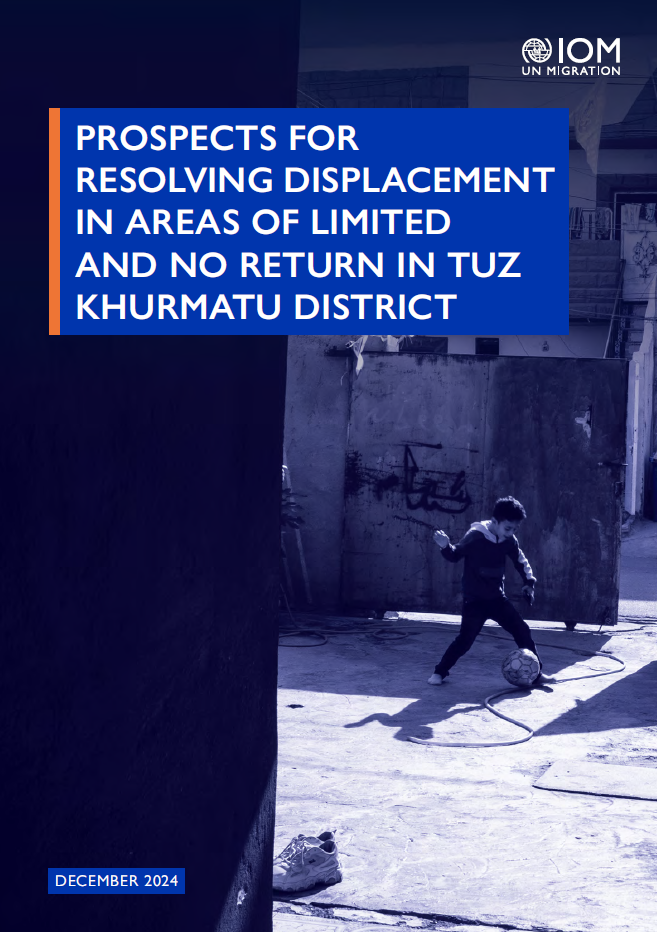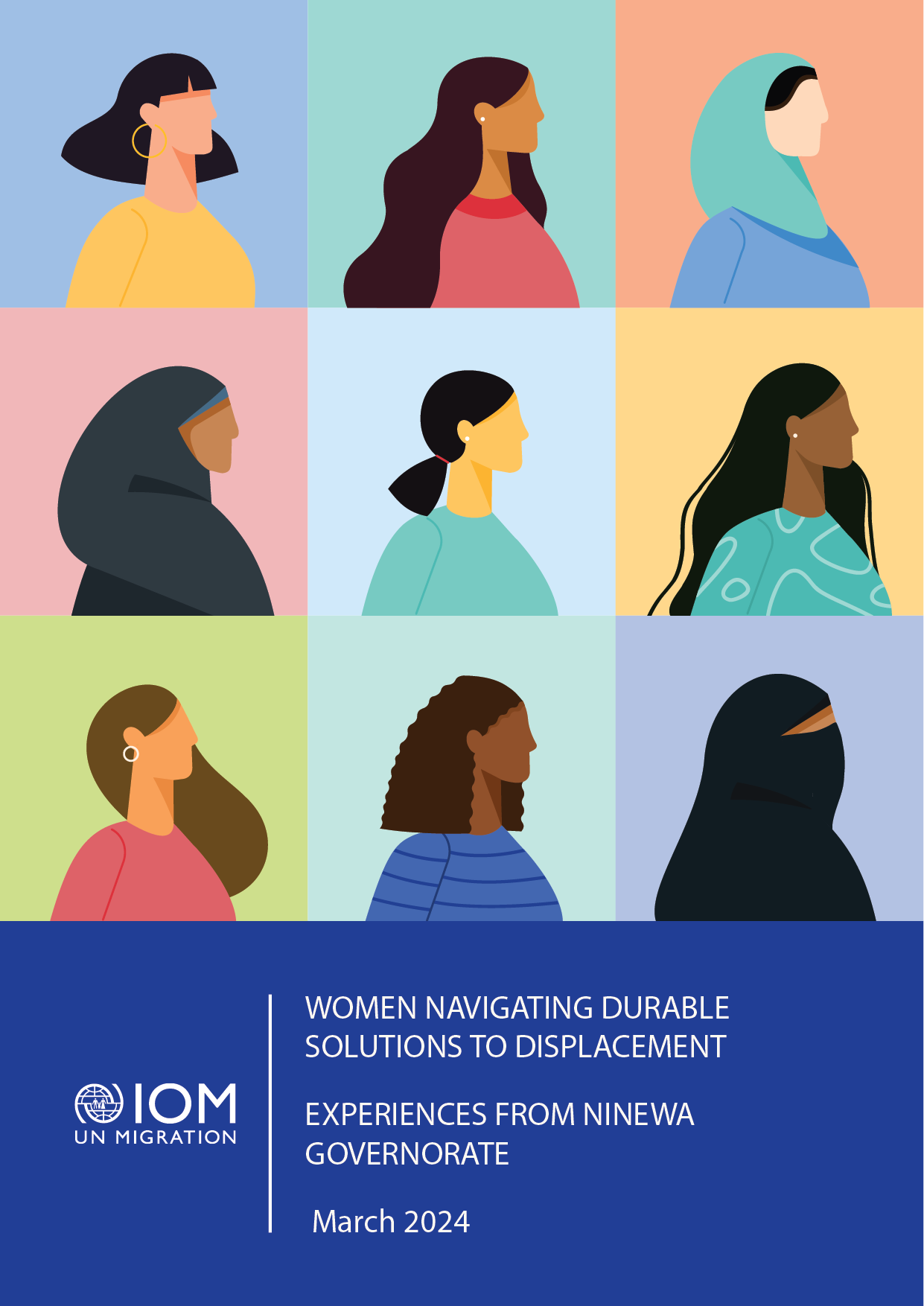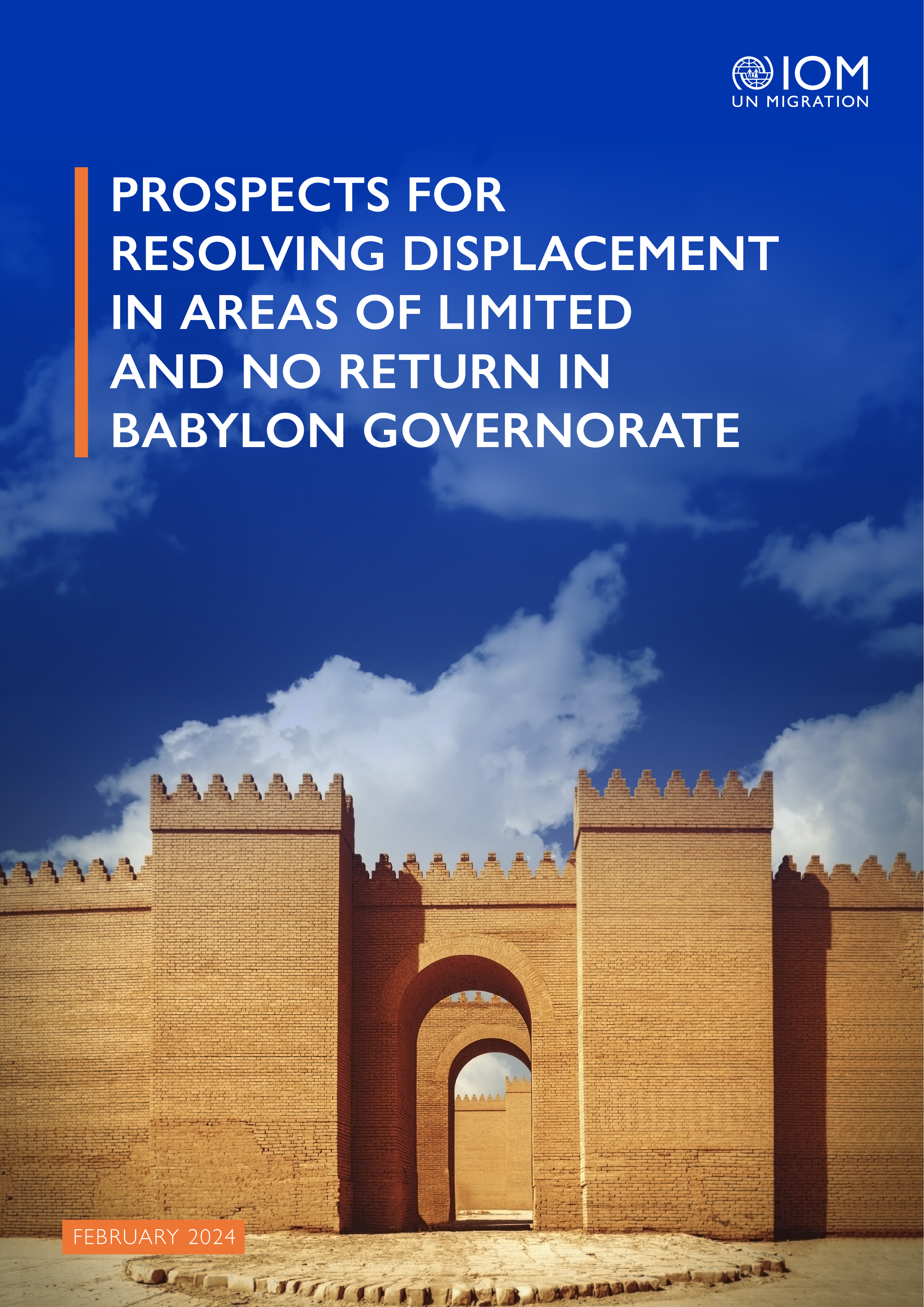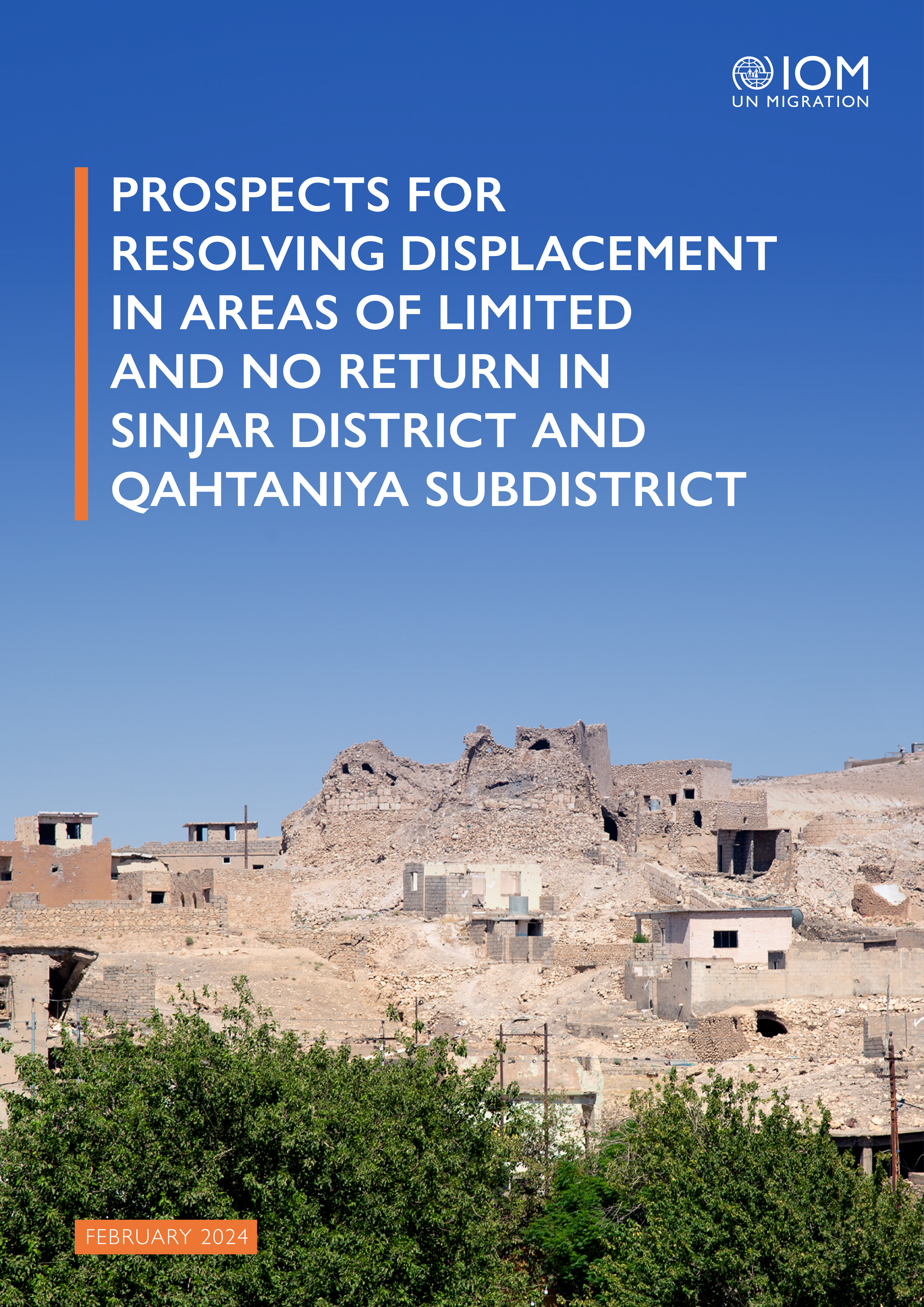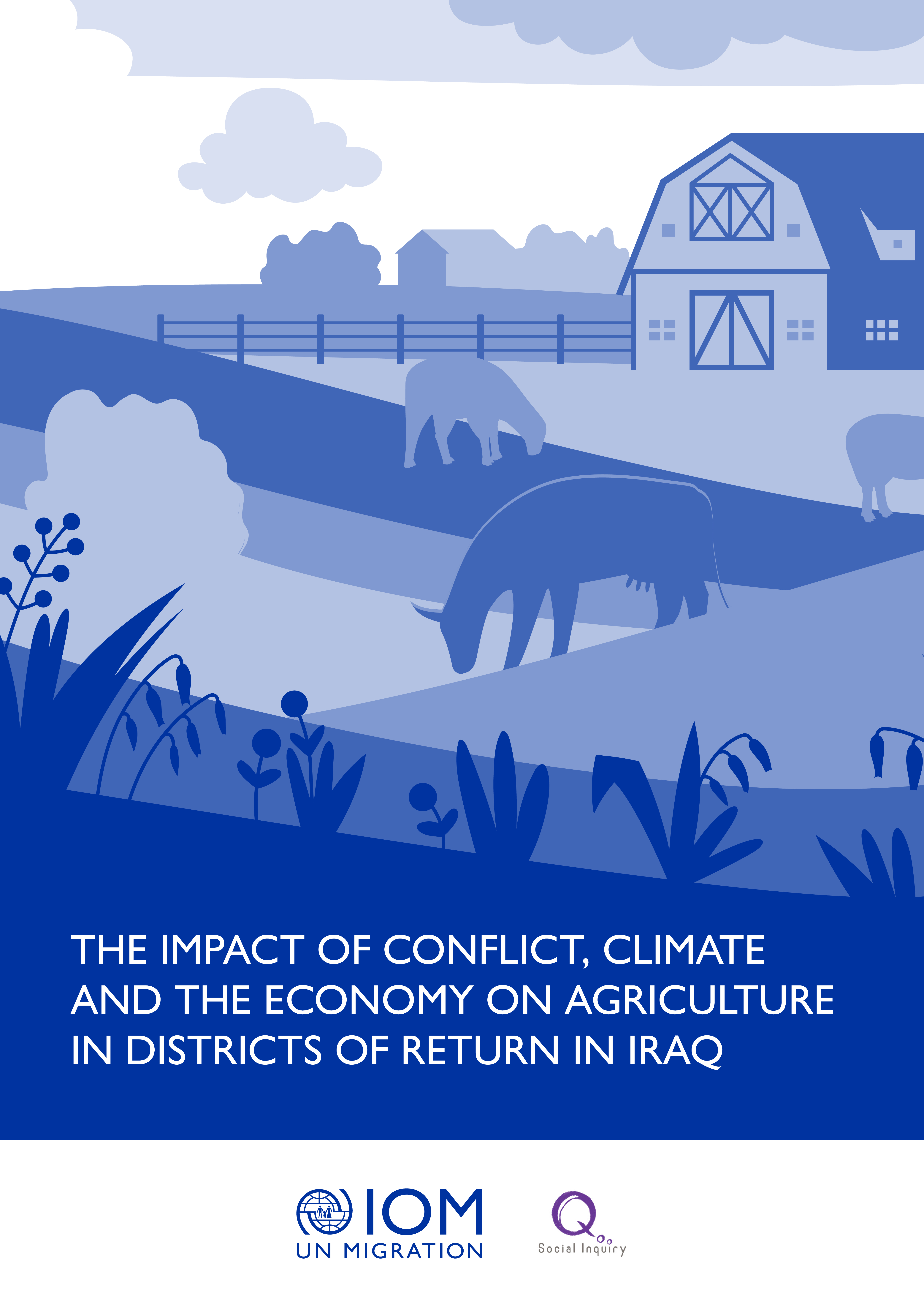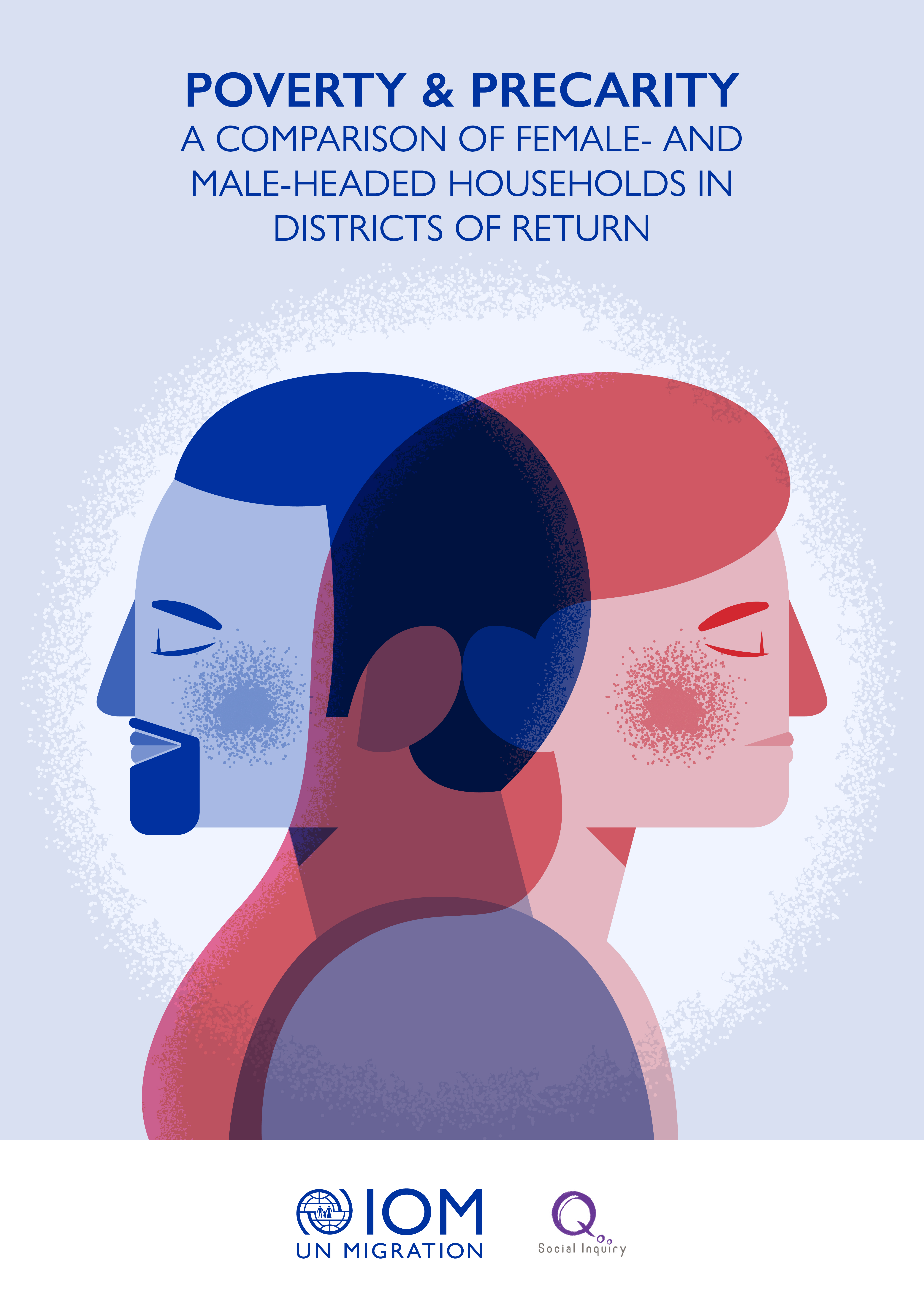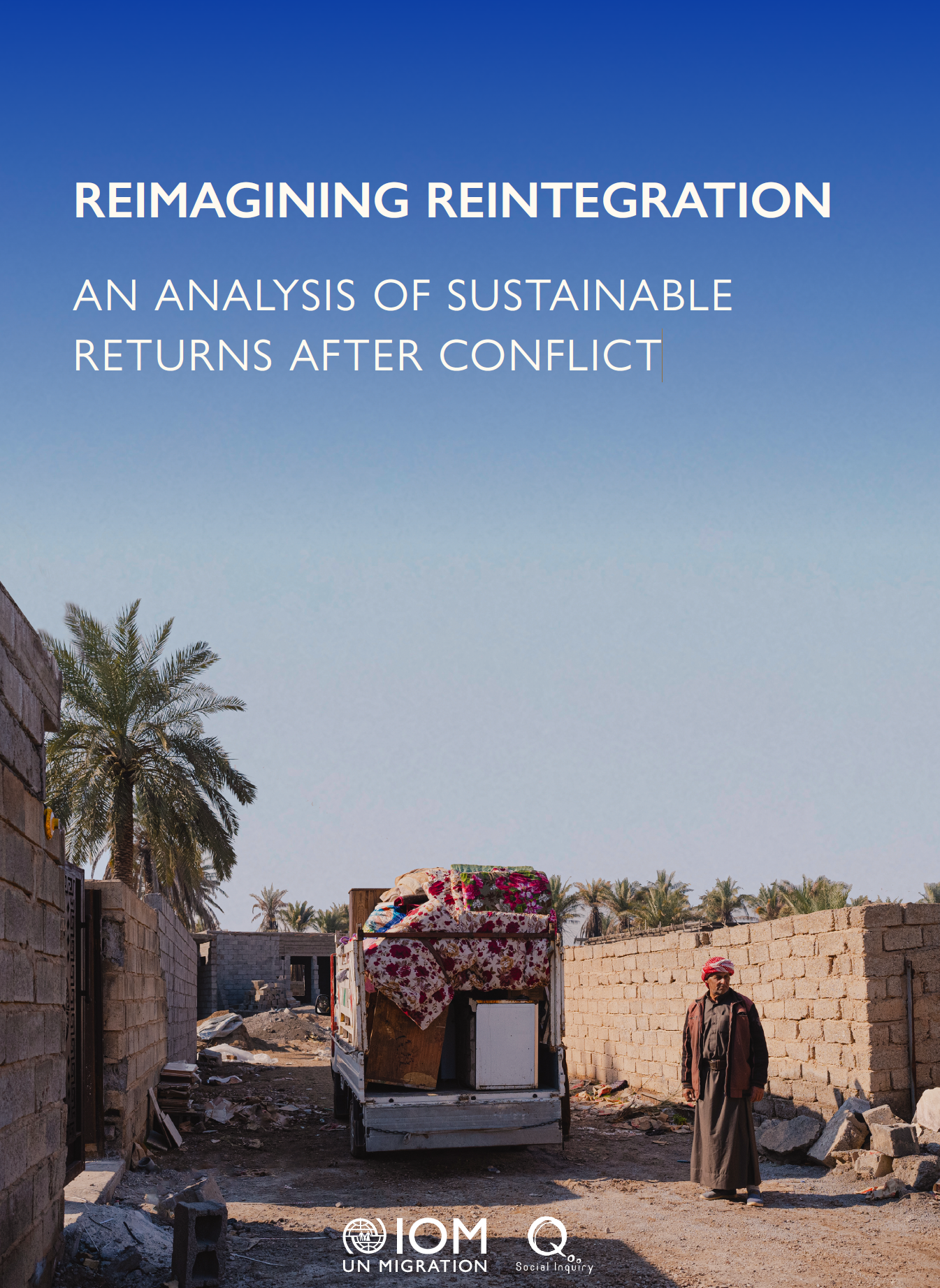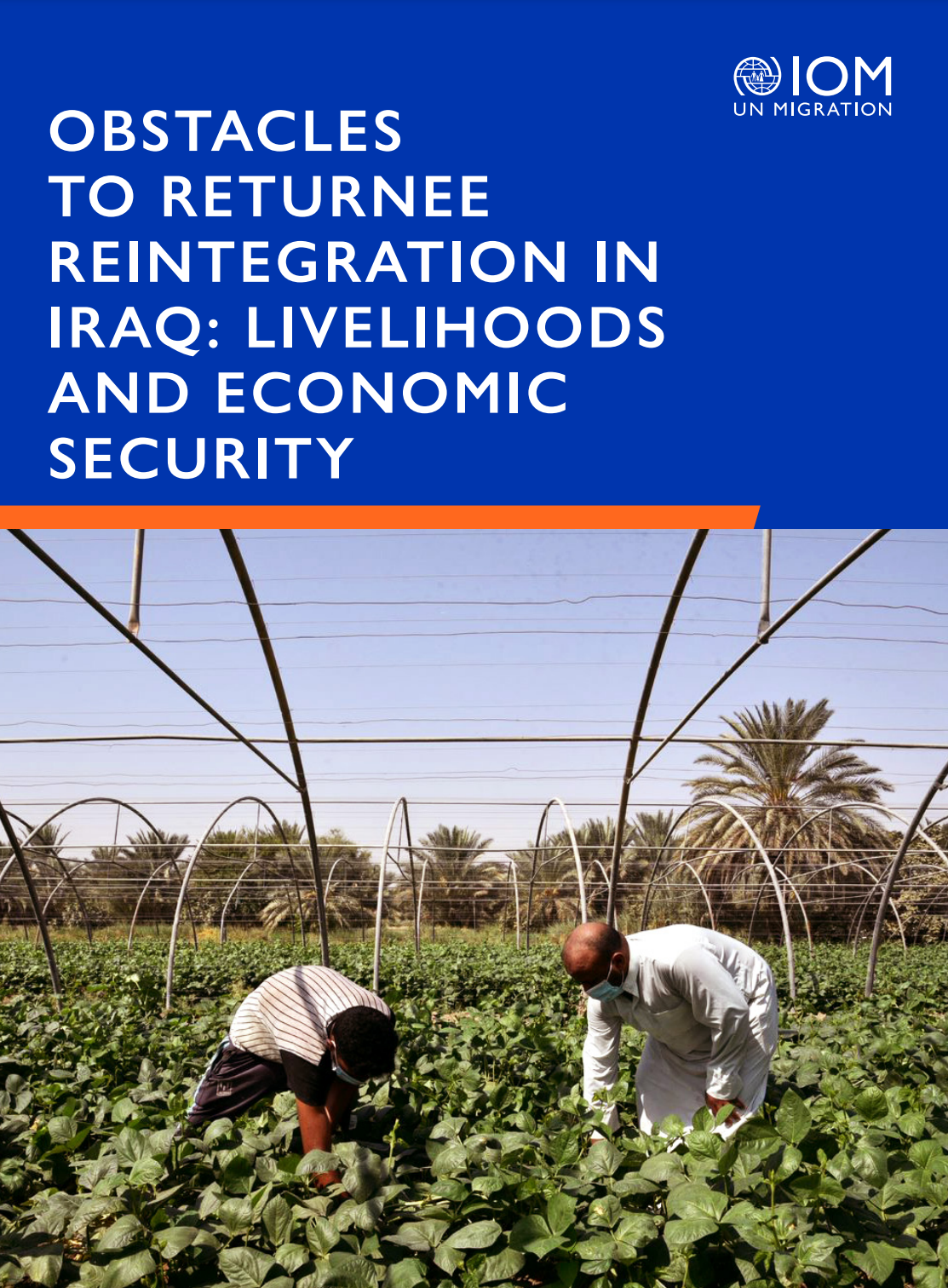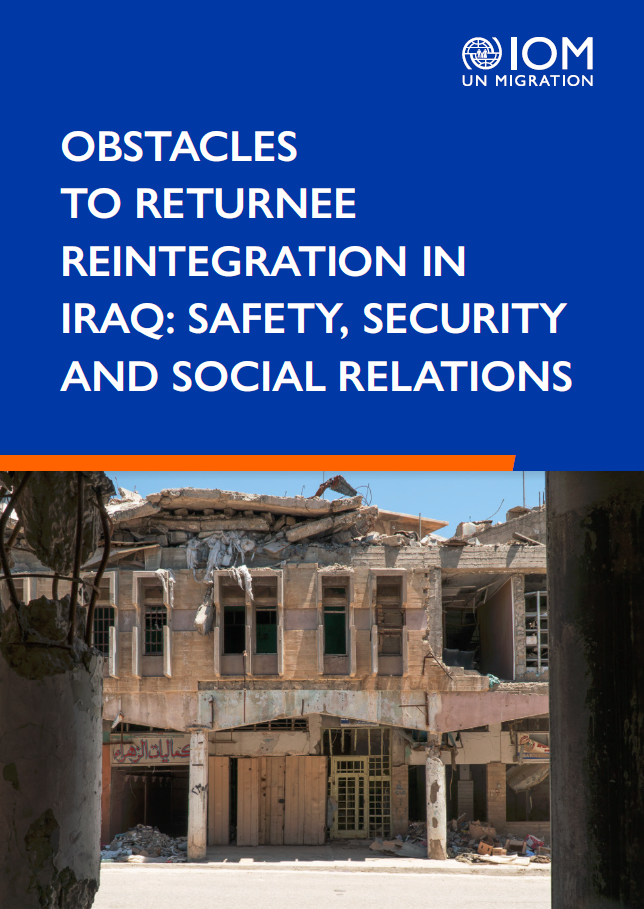PROSPECTS FOR RESOLVING DISPLACEMENT IN AREAS OF LIMITED AND NO RETURN IN TUZ KHURMATU DISTRICT
This report examines the challenges preventing internally displaced persons (IDPs) from returning to Tuz Khurmatu District in Salah al-Din Governorate. It highlights key barriers such as safety concerns, insufficient public services, limited economic opportunities, widespread residential destruction, and community tensions, which continue to obstruct sustainable returns.
Through an analysis of these factors, the report identifies potential pathways to overcome these challenges and aims to support ongoing efforts to improve political dialogue and enable voluntary, safe, and informed solutions to internal displacement for displaced populations.
WOMEN NAVIGATING DURABLE SOLUTIONS TO DISPLACEMENT
This qualitative study, conducted in Ninewa Governorate, Iraq, delves into the experiences of women in navigating durable solutions to displacement. By speaking to women in urban and rural areas, and from diverse ethnoreligious backgrounds, the study combines their voices with extensive quantitative secondary data to illuminate the challenges and barriers women face. Methodologically, the study targets IDP and returnee female-headed households, non-female-headed households, and young women, supplemented by interviews with local and international key informants (KIs).
Focusing on women's agency and decision-making, the study addresses key barriers to reintegration: (i) decision to return, (ii) access to documentation, (iii) housing tenure, (iv) livelihoods, and (v) social networks. The goal is to provide a comprehensive analysis to guide programming and advocacy efforts supporting internally displaced persons (IDPs) and returnees.
PROSPECTS FOR RESOLVING DISPLACEMENT IN AREAS OF LIMITED AND NO RETURN IN BABYLON GOVERNORATE
This in-depth study of areas of limited and no returns in Babylon Governorate seeks to uncover barriers to durably resolving the displacement of affected people and to examine potential ways forward in unlocking those barriers. This is developed through an analysis of how perspectives of affected population groups and stakeholders’ interests – including local, national, and regional – are impacting solutions to displacement.
This report aims to improve the political dialogue in the country on how to provide voluntary and informed choice of residence to people who are experiencing long-term displacement. To request access to this report in both Arabic and English languages, please email us at iraqdtm@iom.int
PROSPECTS FOR RESOLVING DISPLACEMENT IN AREAS OF LIMITED AND NO RETURN IN SINJAR DISTRICT AND QAHTANIYA SUBDISTRICT
This in-depth study of areas of limited and no returns in Sinjar district and Qahtaniya subdistrict seeks to uncover barriers to durably resolving the displacement of affected people and to examine potential ways forward in unlocking those barriers. These proposed ways forward are developed through an analysis of how perspectives of affected population groups and stakeholders’ interests – including local, national, and regional – are impacting solutions to displacement.
This report aims to improve the political dialogue in the country on how to provide voluntary and informed choice of residence to people who are experiencing long-term displacement.
THE IMPACT OF CONFLICT, CLIMATE AND THE ECONOMY ON AGRICULTURE IN DISTRICTS OF RETURN
Following the conflict with the Islamic State in Iraq and the Levant (ISIL), the number of people engaged in agriculture appears to have declined in districts where displaced people have returned to their areas of origin. This analysis brief looks to gain insight into the challenges faced by returnees working in agriculture after the conflict. It considers the degree to which conflict-, economic-, and climate-related factors play a role in the decline of agriculture as a livelihood, and the implications of this change for sustainable reintegration.
View and download the Arabic version of THE IMPACT OF CONFLICT, CLIMATE AND THE ECONOMY ON AGRICULTURE IN DISTRICTS OF RETURN
View and download the Kurdish version of THE IMPACT OF CONFLICT, CLIMATE AND THE ECONOMY ON AGRICULTURE IN DISTRICTS OF RETURN
POVERTY & PRECARITY: A COMPARISON OF FEMALE- AND MALE-HEADED HOUSEHOLDS IN DISTRICTS OF RETURN
Within the top 14 districts of return in Iraq, conditions and perceptions related to reintegration of internally displaced persons (IDPs) do not appear to vary significantly between women and men or between younger and older respondents. Rather, the gender of the head of household is a more critical factor, influencing reintegration outcomes from household living conditions to individual perceptions. Female-headed households, as could be expected, tended to show relatively worse outcomes. The analysis here details the differences in household-level characteristics in terms of conflict experiences, housing, and socio-economic situations. It also examines the individual perceptions of heads of household on safety, security, and social cohesion, and what implications these differences have on durable reintegration.
View and download the Arabic version of POVERTY & PRECARITY: A COMPARISON OF FEMALE- AND MALE-HEADED HOUSEHOLDS IN DISTRICTS OF RETURN
View and download the Kurdish version of POVERTY & PRECARITY: A COMPARISON OF FEMALE- AND MALE-HEADED HOUSEHOLDS IN DISTRICTS OF RETURN
REIMAGINING REINTEGRATION - AN ANALYSIS OF SUSTAINABLE RETURNS AFTER CONFLICT
This report measures the reintegration of the Iraqi returnees across 14 districts in Iraq. The suitability of their return is measured through eighth criteria and compared to a set of data from 2012 (when applicable). The eight criteria measured are: Safety And Security, Adequate Standard of Living, Access to Livelihoods and Economic Security, Restitution and Protection of Housing, Land and Property, Personal Documentation, Family Reunification, Participation in Public Affairs, and Legal Remedies and Justice.
Key Findings: Reimagining Reintegration
OBSTACLES TO RETURNEE REINTEGRATION IN IRAQ: LIVELIHOODS AND ECONOMIC SECURITY
Between 2014 and 2017, the conflict with the Islamic State of Iraq and the Levant (ISIL) resulted in the internal displacement of over one million families. These families fled from their homes in eight of Iraq’s north and central governorates, seeking safety across each of the country’s 18 governorates. Across the country, this group of returnees face significant challenges with reintegrating into their area of origin, especially related to livelihoods and economic security. This report draws on secondary data to examine these challenges in line with the Expert Group on IDP Statistics (EGRIS). It also highlights key differences in the rates at which returnees face these challenges, with comparative analysis between 2020 and 2021 also included.
View and download arabic version of OBSTACLES TO RETURNEE REINTEGRATION IN IRAQ: LIVELIHOODS AND ECONOMIC SECURITY
View and download kurdish version of OBSTACLES TO RETURNEE REINTEGRATION IN IRAQ: LIVELIHOODS AND ECONOMIC SECURITY
OBSTACLES TO RETURNEE REINTEGRATION IN IRAQ: SAFETY, SECURITY AND SOCIAL RELATIONS
In Iraq, over one million families became displaced during the period of conflict with the Islamic State of Iraq and the Levant (ISIL) between 2014 and 2017. Since the Government of Iraq declared victory over ISIL in 2017, 80 per cent of all families who became displaced have returned to their area of origin. However, returnees face persistent challenges in reintegrating into their area of origin – especially related to safety, security and social relations. This report draws on secondary data sources to examine these reintegration challenges in line with the Expert Group on IDP Statistics (EGRIS). It also highlights where these challenges are most prevalent across the country. Comparative analysis of conditions in return locations between October 2020 and September 2021 is also included.
View and download arabic version of OBSTACLES TO RETURNEE REINTEGRATION IN IRAQ: SAFETY, SECURITY AND SOCIAL RELATIONS
View and download kurdish version of OBSTACLES TO RETURNEE REINTEGRATION IN IRAQ: SAFETY, SECURITY AND SOCIAL RELATIONS
HOME AGAIN? CATEGORISING OBSTACLES TO RETURNEE REINTEGRATION IN IRAQ
As of December 2020, Iraq has witnessed the return of 4.8 million internally displaced persons (IDPs) to their places of origin in the aftermath of the ISIL conflict. This is a significant returnee population and, while the movement home is a first step toward reintegration, it is not necessarily an indication of longer-term sustainability per se.
The analysis in this report, by IOM Iraq, the Returns Working Group (RWG), and Social Inquiry, builds upon on and complements previous assessments on durable solutions, mainly with regards to obstacles to return as well as progress toward local integration for IDPs. The focus here is specifically on returnees and obstacles to their sustainable reintegration upon return. The criteria used to examine returnee advancement towards reintegration is based on the International Recommendations for IDP Statistics indicators framework developed by the Expert Group on Refugee and IDP Statistics (EGRIS) in 2020.
